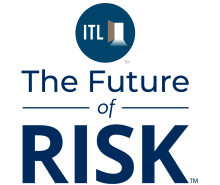Historically, insurance carriers have often considered captive or career agents as the backbone of their sales and distribution model. In recent years, however, the market share of insurance sold through independent channels has grown, eroding the strength of the career agency model.
Consider that in 2024, 53% of all life premium, 41% of annuities, and 39% of personal lines P&C premium all were placed through independent channels – continuing a trend seen over the last several years.
But the issue for carriers is not just that increased premium is coming through independent channels – it's that captive agents are leaving carriers for independent distributors. That matters – captive agents have incentives to push both the carrier's brand and products to customers. A reduction or reliance on captive agents would fundamentally change the entire value chain for a carrier (e.g., product pricing, sales and marketing, customer service models).
The Case for Change
Captive agency models have always battled for talent with independent distributors. A perfect storm has formed to force distribution leaders to rethink their overall strategy:
- Reliance on Third-Party Distribution – The increasing shift in premium sales toward third-party distribution is providing greater leverage to independent channel distributors. This creates stronger negotiation power for advisor commissions and makes carriers much more dependent on those distributors for sales. For instance, while 53% of all life premium came from third-party sales, nearly 90% of indexed universal life (IUL) premium came from independent channels. This reliance puts carriers at potential distribution risk.
- Advisor Shortage – A recent report estimates that in 10 years, there will be a shortage of approximately 100,000 financial advisors. This means that not only is there a competition for assets and customers, but there will also be increased competition for advisors. For carriers leveraging a captive agency model, the advisor deficit further complicates recruitment and retention challenges.
- Owning the Customer – An aging advisor field force and concerns surrounding succession planning have placed a premium on carriers developing relationships directly with the end client. As advisors retire, carriers with stronger client relationships will be better positioned to retain those clients, particularly as clients ask advisors to go beyond simple product sales and focus on more holistic solutions. Captive agent models are uniquely positioned to win this, as their agents are often aligned with the overall corporate brand and marketing that help customers associate their advisors with particular products and services.
The combination of these factors paints a clear picture for distribution leaders – there is significant competition for customers and talent. This forces distribution leaders to develop a robust strategy to either innovate their captive agent model or embrace alternative sales channels and the changes that go along with that.
For some carriers, the decision has been or will be to embrace alternative distribution channels. This is not necessarily a bad strategy, particularly for P&C personal lines carriers, leveraging a combination of direct-to-consumer (DTC) efforts with third-party distribution models to de-emphasize captive agents (e.g., Allstate).
Redefine the Captive Agent Model
But not every carrier has the luxury (or desire) to de-emphasize its career agency channel. Career agent models have innovated before to remain competitive against independent models, but part of the challenge will be to rethink the captive agent value proposition. Specifically, carriers need to embrace four opportunities to win the battle for advisor talent:
1. Win the IXP Battle – Inexperienced producers (IXPs) will likely be the future of the advisor field force – retiring experienced advisors and overall deficit in advisor talent force carriers to rethink the recruitment and development pipeline. Winning recruits on college campuses and those changing careers will be critical to captive agent growth. This means comes down to selection, training, and retention. Leveraging AI will be a key tool – AI models may be more effective methods of pushing enterprise recruitment efforts in identifying candidates who are likely to be successful. To do this, carriers need to think about their existing recruitment strategies, advisor outcome data, and how to leverage them to both market and select the right talent.
2. Redefine the Ease of Doing Business – The ease of doing business is consistently ranked as one of the most important factors when an advisor is choosing which carriers to work with. Captive agent models will need to embrace agent experience as a core strategic goal in their long-term efforts to recruit and retain talent, consistently measuring and tracking efforts to improve agent Net Promoter Score (NPS). But carriers should also redefine the ease of doing business as something beyond whether they accept paper applications. Specifically, carriers should evaluate the ease of developing and growing a business. For example, leveraging carrier data to develop improved leads is a good first step, but matching client persona with agent selling personas in the sales process would increase the likelihood of agent success.
3. Leverage Data to Compete With Technology – Carriers have one significant advantage over independent distributors – they tend to have much more complete views of the customer. This includes not only knowing which policies they have in-force, but the ability to leverage multiple interaction points across the customer journey to create more holistic views of the customer. For example, an independent agent knows that a policy was purchased, but the carrier is in the best position to synchronize a customer's interactions with the agent, contact center, and claims process to understand opportunities to improve cross-sell and next-to-purchase opportunities. Carriers that harness this data can convert it into a strong technological advantage – enhanced data science capabilities, greater insights for potential automation, and stronger AI models to differentiate against the market.
4. Understand Your Advisor – Carriers have devoted countless resources to better understanding their customers, and for good reason. But to win the competition for talent, carriers also have to view their captive agents as another customer they must understand. This means first knowing the value proposition for an individual to become an agent with you. Second, it means knowing who is – and is not – the right fit for your field force. Third, carriers must rethink the role of an agent in a shifting distribution operating model. The value for carriers is in owning and servicing the client. This means that not every agent can or should be performing the same function. For example, leading carriers will evaluate incoming agents and determine whether they should focus on selling or servicing, or if they should be customer-facing or working in a contact center model. Redefining who is an agent and what an agent does in your firm is critical to achieving success.
Carriers must embrace these opportunities to transform their career agency models now as a part of how they assess their broader distribution strategy. A failure to do so now will make carriers reactive to the market. A carrier could find itself where it is overly reliant on a distribution strategy that no longer works – over-reliant on the career agency model with no investment to win the talent necessary to continue to compete in the future.







